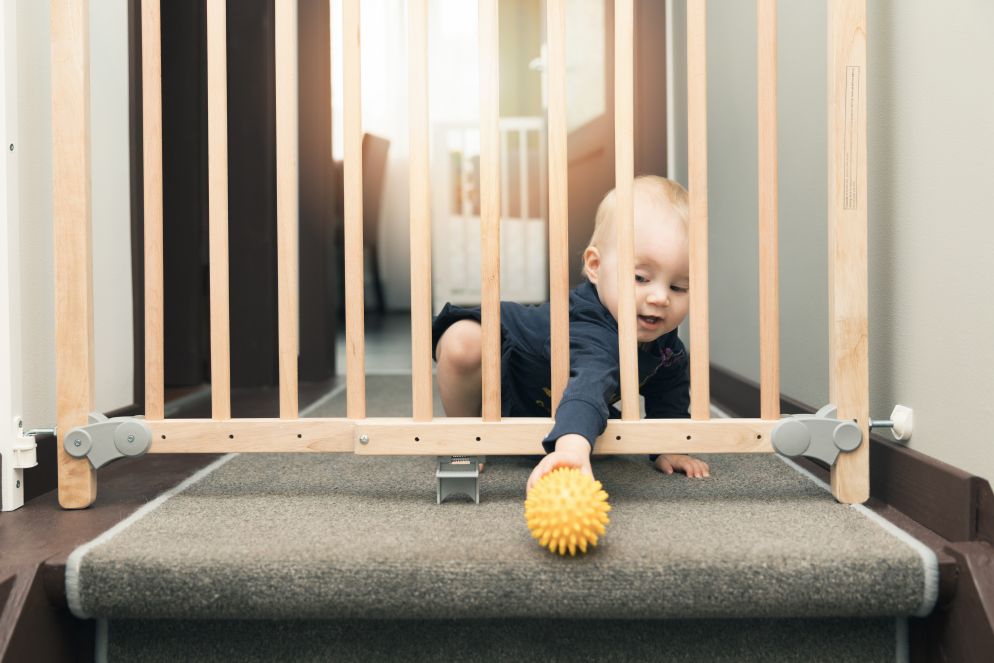RSV — respiratory syncytial virus — affects nearly every baby by the age of 2, causing about 125,000 hospitalizations annually. November is the start of RSV season, which tends to last through early spring. MomSpeaker Paige Wolf knows what to look for, symptom-wise, first-hand, as her son grappled with the disease when he was young. Here's her reminiscence and recommendations for other moms dealing with RSV.
 Back when my now-5-year-old was about 15 months old he got sick. Not just run-of-the-mill cold sick, but inconsolable, high-fevered and listless.
Back when my now-5-year-old was about 15 months old he got sick. Not just run-of-the-mill cold sick, but inconsolable, high-fevered and listless.
A trip to the pediatrician diagnosed him with a double ear infection and prescribed a round of antibiotics. But after a day or two, he still wasn’t seeming any better.
We took him over to the ER at Children’s Hospital, where triage doctors and nurses seemed baffled. They scanned his belly for abdominal blockage and found bronchiolitis with a chest X-ray. But they couldn’t seem to account for why he was so incredibly feverish and lethargic. They even toyed with the idea of giving him a spinal tap to check for meningitis. Meningitis.
Strangely, I was not panicked. I knew there had to be a simple explanation and my maternal instinct told me it was something less catastrophic – but what?
Fortunately after a few hours of administering fluids intravenously his fever came down and he started to act more like himself. We left the hospital with no real answers but the confidence that our baby was on the mend.
The next day we received a call from a hospital nurse to inform us that he had tested positive for RSV. Wait – I had heard of RSV. I knew it was a respiratory virus that could be extremely dangerous for babies but was usually manageable and passed without any serious damage. But why hadn’t that been the first thing the doctors and nurses mentioned? Why was I only hearing about this now? Why were they looking for zebras when he was so clearly demonstrating the symptoms of RSV?
RSV is a common seasonal virus, contracted by nearly all children by the age of 2. It typically causes mild to moderate cold-like symptoms in healthy, full-term babies, but it is also the leading cause of hospitalization for babies during their first year of life in the United States.
Despite being so common, many parents aren’t aware of RSV; in fact, one-third of mothers have never heard of the virus. While every baby is at risk of contracting RSV, babies born prematurely are at increased risk for developing severe RSV disease. While my son was not a preemie, preterm infants are twice as likely as full-term infants to be admitted to the hospital for RSV-related symptoms.
RSV occurs in epidemics each year, typically from November through March, though it can vary by geography and year-to-year. Symptoms to look for include
- persistent coughing or wheezing
- bluish color around the mouth or fingernails
- rapid, difficult or gasping breaths
- high fever (especially if it over 100 degrees in infants under 3 months)
RSV is very contagious and can be spread easily, much like a typical cold. There is no treatment for RSV disease once it’s contracted, so prevention is critical. To help minimize the spread of RSV disease, all parents should wash hands and encourage the same for all children and caretakers; keep toys, clothes and blankets clean; steer clear of people who have recently been sick; and never let anyone smoke around your baby.
Don’t panic: Remember – for most babies RSV is not much worse than a common cold. But if your baby is one who presents serious symptoms, just make sure you know what to look for to get the care he or she needs. For more information, visit RSVprotection.com.
 Paige Wolf is a Philadelphia mom and author of Spit That Out! The Overly Informed Parent’s Guide to Raising Children in the Age of Environmental Guilt. This post is adapted from her blog, Spit That Out!
Paige Wolf is a Philadelphia mom and author of Spit That Out! The Overly Informed Parent’s Guide to Raising Children in the Age of Environmental Guilt. This post is adapted from her blog, Spit That Out!






